Reviews
Dario Argento
Italy, 1980
Credits
Review by David Carter
Posted on 13 October 2010
Source Blue Underground DVD
Related articles
Italian Nightmare Horror
Zombi 2
Categories 31 Days of Horror VII
Italian horror cinema has been accused of a variety of offenses over the years. It is has been labeled as pessimistic, overly violent, and too difficult to comprehend. These criticisms are not without merit depending on the films considered, however. But it is my assertion that those containing aspects of all three supposed flaws are actually a separate subgenre of Italian horror, Italian Nightmare Horror. The films within this subgenre present viewers with bleak world views and jarringly horrific imagery, and eschew cinematic logic for an approach that is more ethereal and oneiric. Over the coming weeks, we’ll be looking at four examples of Italian Nightmare Horror: Lucio Fulci’s Zombi 2 and The Beyond, Dario Argento’s Inferno, and Lamberto Bava’s Demons.
The two films prior to Dario Argento’s Inferno, Deep Red and Suspiria, had redefined the giallo and supernatural horror genres, respectively. Both films offered analysis of the psychosexual subconscious; Deep Red explicitly and Suspiria largely in abstract. Deep Red’s oedipal complexes and childhood traumas developed into Suspiria’s menstrual anxieties and death fears, and together the films combine to be perhaps the best primer on Freudian psychoanalysis in cinema. Argento’s Freudian preoccupation had apparently run its course after these films, though. Freud’s concrete world of sex and repression on display in Deep Red and Suspiria became a Jungian dreamscape in Inferno, a world of surrealism and metaphysical allusions. It is difficult to fully comprehend many of Inferno’s images outside the context of dreams. What can be easily understood, however, is that the universe Argento depicts in the film is one where death is inescapable and the supernatural has supplanted the natural order of the universe.
Inferno’s opening sequence is among the most oneiric in all of cinema. Rose, a young poet living in an imposing New York City apartment building, has become fixated on a mysterious book entitled The Three Mothers, consisting of bizarre ramblings about three ageless witches. The book’s author, a man named Varelli, claims he was forced to build the Three Mothers homes in Freiburg, Rome, and New York and that there is a portrait in the cellar of each building denoting which Mother lives there. Rose comes to believe that her building is the home of the second mother, Mater Tenebrarum, the Mother of Darkness. After a discussion with the antique dealer who sold her the book as to its validity, Rose decides that her curiosity can only be satiated by investigating the cellar on her own.
Rose finds nothing of note in the cellar, save for some leaky pipes and dilapidated furniture. Accidentally dropping her keys into a puddle, she reaches for them only to find that the puddle is far deeper than she first thought. The small hole in the cellar floor is an opening leading to a completely submerged - but perfectly preserved - ballroom. Rose dives into the room and locates her keys but hurriedly attempts to resurface when a decaying corpse begins floating towards her, purposeful in its movements, and she is oblivious to the portrait of Mater Tenebrarum a short distance away. She returns to her apartment, and a black-gloved figure begins destroying the cellar and, with it, the evidence of Mater Tenebrarum’s presence in the building.
The visceral content of this opening sequence is limited to fleeting shots of a waterlogged corpse, but there is more concentrated fear in these few moments than in some entire films. Argento creates tension by revealing nothing about what is happening. The audience is powerless - part spectator, part participant - as in a dream-state. This opening sequence has a litany of allusions to dream imagery and, like the remainder of the film, works on two levels, the conscious and the unconscious, and as with Jungian dream analysis, each image has both an objective and subjective meaning.
Chief among the dream images in this sequence is that of a building, commonly interpreted as a representation of one’s idea of the self. Rose believes there is something fundamentally wrong with her building/her self and to determine the root of the problem she journeys into the cellar, symbolizing the deepest part of her unconscious mind. Water, too, is a particularly rich symbol and standing water in a building and flooded rooms are typically seen as portends of the presence of evil. Water continues to be a main symbol in the film throughout, as we are shown a torrential downpour (negativity/destruction) and, later, Rose’s brother Mark dreams of crashing ocean waves (changes/unease).
Inferno’s Suspiria-like first act of dreams, suspicions, and labyrinthine houses abruptly changes to the second act, which is more akin to Deep Red’s focus on the fallibility of memory and communication. Rose’s brother Mark receives a letter from her detailing her fears about the building but doesn’t read it immediately. He misplaces it, and his classmate Sara reads it and, shocked, tries in vain to get it into Mark’s hands. He arrives to pick it up only to find Sara and her neighbor brutally murdered and the letter torn to shreds. After a phone call to Rose is cut short by line troubles, Mark journeys to New York to find out what is bothering her and Inferno begins a steady drift away from narrative into almost full surrealism.
The film is largely supernatural in tone for the Rose and Sara portions but transitions immediately into a stark realism once Mark arrives in New York. Rose’s building, previously a shadowy place bathed in oddly placed red, blue, and green light, is now dully earth-toned. Argento is purposefully contrasting the masculine and feminine sections of the film and even points out in the early section that women are more in tune with supernatural events than their male counterparts. Rather than discounting women as given to superstition and wild beliefs, Argento is actually critiquing men via Mark’s inability to see or comprehend what is truly occurring. The film’s females are able to sense the presence of the supernatural evil and subsequently die because they have gained this knowledge. Mark survives simply because is too blind to understand and therefore not a threat to Mater Tenebrarum.
When Mark first surveys Rose’s building, one small detail is noticed by him briefly and lasts only a few frames but is incredibly important for understanding Argento’s inspiration and goals for Inferno. A capstone notes that the building was once the residence of Armenian mystic Georges Gurdjieff—a largely forgotten now but was hugely influential on avant-garde artists in the sixties and seventies, and it is certainly not a coincidence that Argento invokes his name here as Inferno represents several of the main concepts of his teaching. Chiefly, Gurdjieff believed that all humans existed in a state of hypnotic sleep, stating that, “to be truly alive, we must turn that sleep into a higher state.” I would argue that Inferno is Argento’s attempt to translate that “higher state” cinematically, and within the confines of the horror genre. Gurdjieff’s writings were purposefully over-complex as to make them near impossible to decipher, and here Argento is providing us with images that may or may not have concrete meanings. There may not be a narrative at all in Inferno and perhaps like Gurdjieff’s writings, it is only intended to spur thought rather than to convey a particular meaning.
Argento’s incorporation of Jung’s dreams and Gurdjieff’s mystical allusions leads any discussion of Inferno to be exclusively subjective. I maintain that Inferno is primarily a film of symbols but I make no claim to be able to accurately interpret those symbols or even to determine if they have any meaning at all. The film’s oneirism lends itself a bit too easily to digression. It is too tempting to ascribe a meaning to every image, action, or color choice, but to do so would be to lose sight of Argento’s true motives for Inferno. He is trying to frighten the audience; a task that he is more than capable of accomplishing. Inferno is a film that works on both the intellectual and visceral levels and Argento provides us with plenty of examples of true, objective horror.
The film lacks anything as spectacular as the clockwork precision of Suspiria’s Rube Goldbergian first murder, but opts instead for more a more overt form of terror that bears a striking resemblance to the works of Lucio Fulci. Rose’s death, in particular, is difficult to watch: the hairy, clawed hands of an unseen attacker attempt to decapitate her with a pane of glass but the villain is unable to accomplish this in a single blow. Argento then shows us the pane slamming repeatedly into Rose’s neck until her head is finally severed. Though not as graphic as Fulci’s eye-gougings or intestinal regurgitations, this scene is nonetheless cringe-inducing. Other startling scenes include deaths by cats and rats, displaying Mater Tenebrarum’s ability to turn nature itself against her victims.
Ultimately, Inferno’s most compelling feature is its ability to serve as a skeleton key to understanding all of Argento’s work. Almost like a self-parody, the film contains elements of each of his films and is more representative of him as a filmmaker than his quasi-autobiographical films Tenebre and Opera. It is therefore unfortunate that Inferno is often dismissed as one of his lesser works. It is part dream, part nightmare, and may pose too great a challenge to the casual viewing that horror so often invites. It is a film that requires a larger time investment. I admit that my first impressions of Inferno a few years ago were less than enthusiastic. As I’ve delved into the film again throughout the years, I have found it to be more chilling each time, however. It is not the kind of horror that frightens or shocks you while are watching it but rather the kind that leaves you with a sense of unease for some time after. In the pantheon of Italian Nightmare Horror, it represents a bridge between the gory shocks of Fulci’s Zombi 2 and the cerebral, surreal terrors of The Beyond.
More 31 Days of Horror VII
-

The Thin Blue Line
1988 -

The Ninth Configuration
1980 -
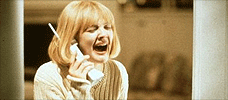
Scream
1996 -
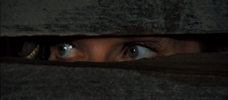
Dying Room Only
1973 -

Brain Dead
1990 -

Zombi 2
1979 -
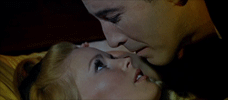
Dracula Has Risen from the Grave
1968 -

The Storyteller
1988-1989 -
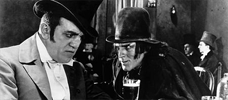
Dr. Jekyll and Mr. Hyde
1920 -

I Know What You Did Last Summer
1997 -
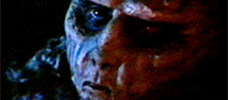
Don’t Be Afraid of the Dark
1973 -

Dark Age
1987 -
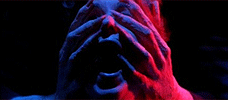
Inferno
1980 -
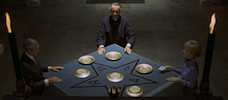
To the Devil a Daughter
UK / West Germany -
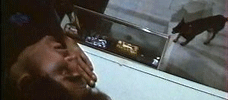
Trapped
1973 -
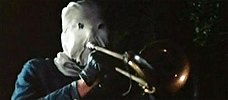
The Town that Dreaded Sundown
1976 -
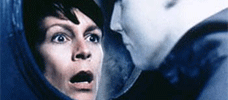
Halloween H20: Twenty Years Later
1998 -

Killdozer
1973 -
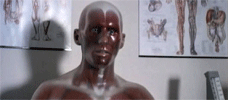
Pin
1989 -
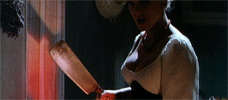
Frankenstein Created Woman
1967 -
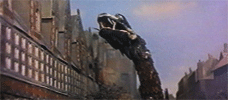
Reptilicus
1961 -
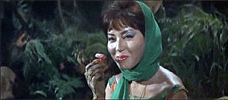
Matango
1963 -

I Still Know What You Did Last Summer
1998 -
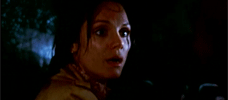
Night Terror
1977 -
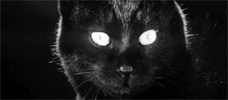
Kuroneko
1968 -

Demons
1985 -
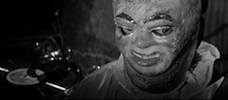
Paranoiac
1963 -
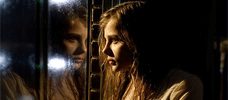
Let Me In
2010 -
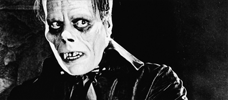
The Phantom of the Opera
1925
We don’t do comments anymore, but you may contact us here or find us on Twitter or Facebook.



